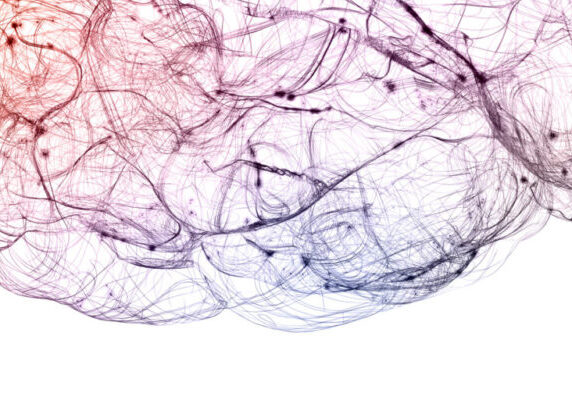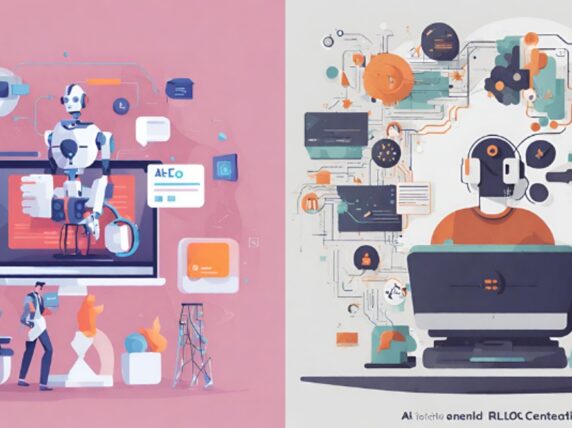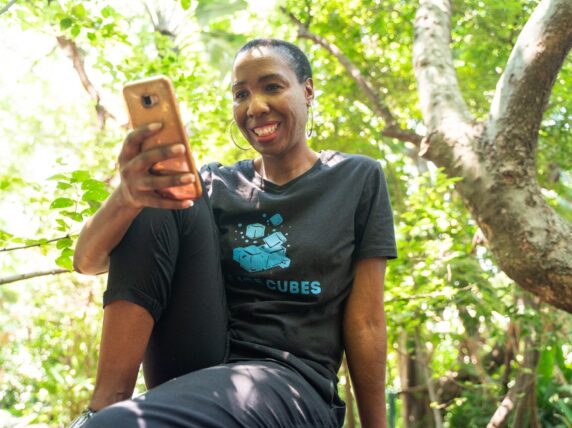6 ways artificial intelligence is being used in international development
Artificial intelligence (AI) is a hot topic. Those who champion AI suggest it could solve international crisis, bring an end to poverty and help prevent catastrophe.
But sceptics argue that using it could lead to an end to privacy and millions of jobs being lost.
There are a lot of promising ideas for AI to do good for the world. And here are six of them that could improve international development and humanitarian assistance. They’re all projects that are either in production or already functioning.
1. The innovation that knows where to build a school
Using satellite technology, government and census data, crowdsourcing and machine learning, Unicef has created a tool to map every single school in the world. The data generated will determine where there are gaps and limitations to education systems and can dictate and advise governments on their education strategies. It can also problem solve for those children with no or difficult access to a school.
The global rate of school enrolment has plateaued since 2007, and Unicef predicts that 60 million children won’t have access to education by 2030. The project has already mapped areas of Colombia, Brazil, Kyrgyzstan, Liberia, Malawi and Mauritania. But Unicef is determined to map every school in the whole world.
2. The app that learns what the student needs to learn
China-based Squirrel AI is an intuitive app that can help students learn more effectively. The student answers a series of questions on a subject and, using this data, the Squirrel AI algorithm determines what areas of study need to be focused on and in what order. Regular testing, video lectures and interactive programs help to “plug the learning gaps” without going over areas that the pupil already has substantial knowledge of.
In June 2018, 785 schools across China began using Squirrel AI to learn whether the tool could benefit a substantial amount of students. The company is also planning an expansion into international markets. If this way of learning proves to be successful, it could be a huge asset to those children with less access to education.
Subscribe to our newsletter
Our weekly email newsletter, Network News, is an indispensable weekly digest of the latest updates on funding, jobs, resources, news and learning opportunities in the international development sector.
Get Network News3. The algorithm that can learn where best to relocate refugees
The AI for Good Foundation is funding few different projects. One of them is a program that uses refugee information from previous crises, census data, economic data of the area where the refugees have come from and economic data from neighbouring countries. With this information, the program can determine where displaced people would best be relocated by skillset, resource availability and capacity.
This project is a work in progress, and potentially faces a lot of pushback from nations more hostile to accepting refugees. However, with ongoing global conflicts and increasing amounts of climate displacement, this program could be a huge help and a valuable tool for showing the benefits of taking in refugees.
4. The database that can find and rehabilitate missing children
The TrackChild portal in India uses information on a local and national level from police stations, shelters and other agencies to help locate children that have been reported missing. The portal uses keywords and other descriptors to reunite children with their families or carers. The portal has had a strong success rate and is also used for finding missing adults.
The portal also maps areas that children disappear from, spotting trends and analysing what services are available for children that have been identified as being in a vulnerable area. When they have found a child, the child is also monitored and offered rehabilitation services to ensure they have continued support.
5. The program that can diagnose those in an emergency
By inputting thousands of emergency calls into their program, Corti’s software can now spot patterns in speech that suggest when a caller is having a cardiac arrest. Using the software, the emergency dispatcher can correctly spot a cardiac arrest, which helps with triage. Corti can reduce the number of undetected out-of-hospital cardiac arrests by 50%.
The Danish-based company has already rolled out their technology, with plans to expand capabilities to include spotting other serious medical emergencies.
6. The network that can count, identify and describe animals in the wild
Motion-sensor cameras are a great way of observing animals in the wild without being obtrusive. But to analyse each image, these camera traps come at a huge cost and take a lot of man power.
By using facial recognition technology, deep-learning technology and deep neural networks, the PNAS technology can identify an individual animal and its species to an accuracy of 96.6%, which is the same accuracy as when the image analysis is crowdsourced.
On the dataset the network was tested on, which included 3.2 million photos captured on the Serengeti, it was able to identify 99.3% of the images. This tool could prove invaluable for conservation efforts in Africa and beyond.
For all the latest exciting content from Bond, sign up to our Network News email and never miss a thing.
Category
News & ViewsThemes
Communications



